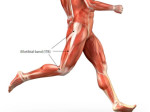Pain arising from the knee joint itself presents as pain in the front, the sides or the back of the knee. Sometimes, pathology in the hip can present with knee pain and this is known as referred pain.
There are many causes of knee pain and they vary depending on the age of the patient, whether trauma was involved, associated medical problems, the activity level of the patient, etc.
Knee Pain Causes
The common knee pain causes are :
1. Sports Injuries (Traumatic & Overuse)
Traumatic Injuries
- ACL Injury
Changing direction rapidly, slowing down when running, and landing from a jump may cause tears in the ACL. Athletes who participate in skiing and basketball, and athletes who wear cleats, such as football players, are susceptible to ACL injuries. - MCL Injury
Injuries to the MCL are usually caused by a direct blow to the outside of the knee. These types of injuries often occur in contact sports, such as football or soccer. - PCL Injury
The PCL is often injured when an athlete receives a blow to the front of the knee or makes a simple misstep on the playing field. - Torn Cartilage or Torn Meniscus
When people talk about torn knee cartilage, they are usually referring to a torn meniscus. The meniscus is a tough rubbery cartilage that is attached to the knee’s ligaments. The meniscus acts as a shock absorber. In athletic activities, tears in the meniscus can occur when twisting, cutting, pivoting, decelerating, or being tackled. Direct contact is often involved.
Overuse Injuries
- Patella And Quadriceps Tendinitis.
 This refers to inflammation of the patella (kneecap) tendon and the quadriceps tendon respectively. Athletes who do a lot of jumping and sports may feel knee pain after running at the front of the knee. The knee pain usually worsens with activities such as sprinting, jumping and stair climbing. Rest and physiotherapy helps. In our practice, we use a lot of RSWT (radial shockwave therapy) to treat both forms of tendinitis with good results. In chronic cases that are resistant to RSWT or physiotherapy, we offer platelet-rich plasma (PRP) injections to the diseased tendon to promote healing.
This refers to inflammation of the patella (kneecap) tendon and the quadriceps tendon respectively. Athletes who do a lot of jumping and sports may feel knee pain after running at the front of the knee. The knee pain usually worsens with activities such as sprinting, jumping and stair climbing. Rest and physiotherapy helps. In our practice, we use a lot of RSWT (radial shockwave therapy) to treat both forms of tendinitis with good results. In chronic cases that are resistant to RSWT or physiotherapy, we offer platelet-rich plasma (PRP) injections to the diseased tendon to promote healing. - Iliotibial Band (ITB) Syndrome.
This is one of the most common overuse injuries among runners and cyclists. It occurs when the iliotibial band, the ligament that runs down the outside of the thigh from the hip to the shin, is tight or inflamed. The IT band attaches to the knee and helps stabilize and move the joint.
When the IT band isn’t working properly, movement of the knee (and, therefore, running or cycling) becomes painful. IT band pain can be severe enough to completely sideline a runner or cyclist for weeks, or even longer. Because the most notable symptom is typically swelling and pain on the outside of the knee, many runners mistakenly think they have a knee injury. The best way to tell if you have ITBS is to bend your knee at a 45-degree angle. If you have an IT band problem, you’ll feel pain on the outside of the knee. Rest, stretching, physiotherapy helps. In our practice, we use a lot of RSWT (radial shockwave therapy) to treat both ITB syndrome with good results.
1. Osteonecrosis
This condition refers to “bone death” where areas of bone and bone marrow die due to a lack of blood.
Looking For A Reliable Knee Orthopaedic Specialist?
Fast Medical Attention, Transparent Fees
Make an appointment for comprehensive care for your knee problems!

